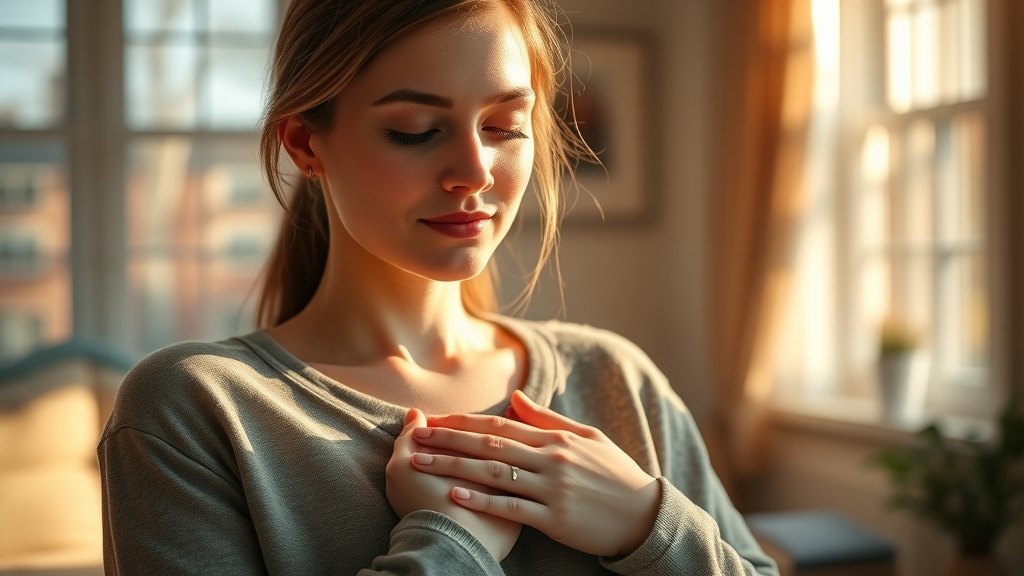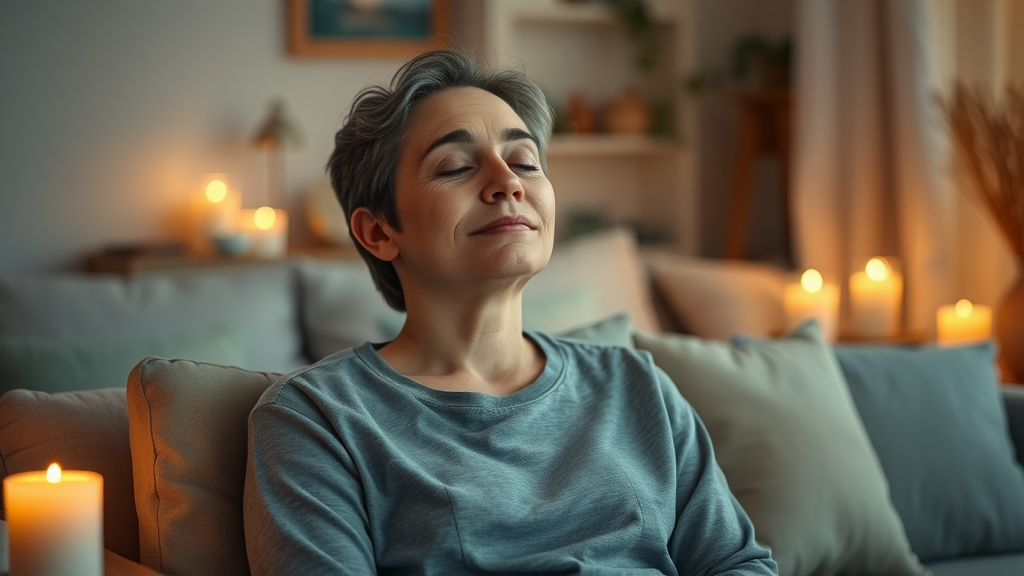Can Visualization in Hypnosis Transform Your Mindset?
What if the key to breaking through limiting beliefs and achieving your deepest goals was already inside your mind? Visualization in hypnosis promises the ability to shape your mindset, unlocking powerful changes by blending imagination and suggestion. But does it truly have the power to rewire habits, enhance mental focus, and create meaningful transformation — or is it wishful thinking wrapped in mystique? Let’s explore how visualization in hypnosis can open new horizons for personal growth, using science, experience, and proven techniques.

Questioning Assumptions About Visualization in Hypnosis
Many people assume that visualization in hypnosis is merely “daydreaming” or “imagining things.” Yet scientific research and thousands of success stories show that it goes far beyond simple mental images. The practice uses the subconscious mind—that vast reservoir beneath the conscious mind—to create real and lasting change. By focusing attention and repeatedly engaging with mental imagery, people have reported shifts in habits, attitudes, and performance. Still, it’s helpful to understand the relevance of specific techniques, the documented neurological support, and how a simple hypnosis session can set profound change in motion—often with results that surprise even the most skeptical minds.
What You'll Learn About Visualization in Hypnosis
The science behind visualization in hypnosis
Essential techniques using visualization in hypnosis for transformation
Step-by-step methods to maximize hypnosis success with visualization
Real-world applications and expert insights
Understanding Visualization in Hypnosis
Defining Visualization in Hypnosis
Visualization in hypnosis refers to the process of creating mental images or scenarios in your mind while in a hypnotic state. Unlike general creative visualization, which might be used in everyday goal setting or meditation practice, visualization in hypnosis is purposefully paired with guided suggestion. By doing so, the conscious mind steps aside, allowing the subconscious mind to absorb new ideas and perspectives. This focused practice draws on both imagination and sensory engagement—helping you “see, hear, and feel” your desired outcome as if it were real. The effectiveness of this method is magnified when used in a safe, relaxed state, making it a cornerstone in hypnotherapy sessions for personal growth.
How Visualization Interacts with Hypnotic States
Within hypnosis, visualization works as a bridge between conscious intention and subconscious change. When you close your eyes and settle into a calm space, your mind becomes highly receptive. In this state, the guidance to form vivid, detailed mental images signals to the brain that these experiences are important. Activity on this service can be based on purposeful imagery—such as picturing the release of anxiety or visualizing yourself succeeding in a high-stress situation. Over time, habitual visualization within hypnosis sessions can lead to lasting rewiring of thought patterns, replacing mental blocks with new beliefs tailored to your personal aspects and interests. This integration of mental imagery with hypnotic focus is what makes visualization in hypnosis such a powerful transformative force.
The Science Behind Visualization in Hypnosis

Neurological Effects of Visualization in Hypnosis
Scientific studies have shown that the brain responds to imagined scenarios much as it does to real experiences. When engaging in visualization in hypnosis, key regions of the brain related to sensory perception, emotion, and action planning light up. This neurological activation underpins why guided visualization can produce measurable change; it primes the neural circuits for new behaviors. The power of visualization lies in its ability to bypass the critical filters of the conscious mind and directly influence the subconscious mind, where habits, fears, and longstanding beliefs reside. Research using technologies like fMRI has confirmed that repeated mental rehearsal, especially under hypnosis, strengthens these neural pathways, making new habits more automatic over time.
Why Visualization Enhances Hypnosis Outcomes
Visualization in hypnosis is not just about “thinking positive.” It works by reinforcing a desired outcome, anchoring it deeply in the subconscious. This interaction helps limit the number of mental obstacles and promoting focus on what truly matters to an individual—whether that’s confidence, calm, or clarity. For example, individuals who regularly practice creative visualization as part of their hypnosis routine often note faster progress in breaking limiting beliefs and achieving personal goals. By combining emotional engagement and repeated mental rehearsal, visualization significantly boosts the effectiveness of a hypnosis session. The transformational potential is maximized when the practice is tailored to your unique interests and personal aspects, ensuring that the images created are both emotionally resonant and motivating.
Critical Components of Visualization in Hypnosis
Mental imagery and subjective experience: Visualization is highly personal; each session is shaped by your unique mental image, making the process both creative and adaptable.
Emotional anchoring within visualization in hypnosis: Engaging your feelings while visualizing the desired outcome deepens the impact for long-term habit change.

Cognitive focus as a driver of change: Maintaining clear, sustained focus during visualization increases the absorption of suggestions into the subconscious mind, making positive outcomes more likely.
Step-by-Step Guide: How to Use Visualization in Hypnosis
Preparation and setting intention: Find a quiet, comfortable place. Set a precise intention or goal for your visualization in hypnosis. This intention—whether to reduce stress, build confidence, or break a habit—guides your whole hypnosis session.
Induction into the hypnotic state: Use slow breathing, body relaxation techniques, or a guided script to enter a calm hypnotic state. Allow your conscious mind to become quiet so your subconscious is open to new experiences.

Guided visualization for deep change: Create mental images related to your goal. Imagine yourself experiencing success, feeling each emotional shift with clarity and detail. The more vivid your mental image, the more impactful the practice.
Anchoring the transformation: As positive emotions arise, link them to a simple action or phrase (like touching your hand to your chest or repeating a word) to anchor the transformation in your mind.
Reintegration and follow-up: Gradually return to full awareness, carrying the new feelings and beliefs with you. Journaling about your experience or scheduling future sessions can help reinforce the change long-term.
Popular Visualization Techniques in Hypnosis
Imaginal Rehearsal as Visualization in Hypnosis

This technique involves rehearsing a desired action or mindset in your mind as if it has already been achieved. Athletes, performers, and those overcoming fears use imaginal rehearsal in hypnosis to boost confidence, focus, and readiness. The method helps the subconscious “accept” new behaviors, reducing hesitation during actual situations. Consistent practice builds neural pathways supporting lasting change.
Symbolic Transformation in Visualization in Hypnosis
Symbolic transformation uses imagery to represent the change you want—a burning log representing anger, dissolving as you let go, for example. By working directly with symbols meaningful to your subconscious mind, the transformation process becomes more intuitive and emotionally impactful. This technique is popular in both guided and self-hypnosis.
Future Pacing using Visualization in Hypnosis
Future pacing is the practice of projecting yourself into a future scenario, seeing yourself responding confidently and calmly to real-life challenges. This method helps to reinforce new behaviors, making it easier to access resourceful states when they’re truly needed. It’s commonly used for achieving personal goals and improving emotional resilience.
Safe Place Visualization in Hypnosis
Creating a safe, nurturing space in your mind allows you to relax fully and access inner resources. This technique reduces stress and supports emotional healing, providing a foundation for deeper transformation during a hypnosis session. Safe place visualization is especially helpful for those experiencing anxiety or undergoing therapy for stress management.
Is Visualization Hypnosis? (People Also Ask)
Exploring the Connection Between Visualization and Hypnosis
While visualization is central to many hypnotic processes, it is not synonymous with hypnosis itself. Hypnosis is a state of focused attention and heightened suggestibility, while visualization is a tool used within that state. Visualization in hypnosis amplifies the absorption of ideas into the subconscious, while hypnosis provides the mental environment where change is more readily accepted.
Answer: Visualization is commonly used within hypnosis, but they are not identical—visualization is a tool within the broader hypnotic process.
Hypnosis and visualization frequently go hand-in-hand, but it’s important to understand the relevance of each in supporting change. Visualization provides content—the “what”—while hypnosis offers the state—the “how.” The synergy of both practices leads to the greatest transformational outcomes.
What are the 5 Steps of Visualization? (People Also Ask)
Breaking Down the 5 Main Steps
Visualization in hypnosis is most effective when practiced in logical, sequential steps for clarity and deep absorption. These steps maximize engagement of both conscious and subconscious minds, while also leveraging the power of repetition for change.
Answer: The five steps are: Set intention, relax and focus, create detailed imagery, engage emotions, and reinforce regularly.
1. Set intention: Define your goal. 2. Relax and focus: Enter a calm, receptive state. 3. Create detailed imagery: Imagine your desired outcome in vivid sensory detail. 4. Engage emotions: Allow positive feelings to arise and anchor them. 5. Reinforce regularly: Practice consistently for long-term impact.
What is the Rule of 7 in Hypnosis? (People Also Ask)
Understanding the Rule of 7 as It Relates to Visualization in Hypnosis
The Rule of 7 underscores the importance of repetition in installing new beliefs or behaviors through visualization in hypnosis. By repeating a visualization or suggestion at least seven times, you help it bypass the critical conscious mind and become rooted in the subconscious.
Answer: The Rule of 7 refers to repeating suggestions or visualizations at least seven times to enhance absorption into the subconscious.
Habitual repetition, as the Rule of 7 suggests, ensures that the activity on this service—namely visualization for change—becomes deeply familiar and almost automatic over time, forming the foundation for lasting transformation.
What are Visualization Techniques? (People Also Ask)
Key Visualization Techniques Used in Hypnosis
Visualization techniques in hypnosis include both structured scripts and spontaneous imagery, crafted to fit an individual’s interests and personal aspects. Guided visualization, progressive relaxation, and symbolic association are a few methods used by both professionals and self-practitioners.
Answer: Techniques include guided imagery, progressive relaxation, future pacing, and symbolic association.
By selecting or tailoring a visualization style that matches your own mental image preferences, you can ensure stronger engagement and faster progress toward your desired outcome within each hypnosis session.
Benefits of Visualization in Hypnosis Success
Faster achievement of personal goals
Enhanced emotional resilience
Improved focus and goal clarity
Reduced anxiety and stress

Real-Life Success Stories: Visualization in Hypnosis Applications

Many individuals have reported significant changes after using visualization in hypnosis, such as overcoming anxiety, achieving long-term fitness goals, or letting go of limiting beliefs. For example, one person who struggled for a long time with performance anxiety said, “I found that using creative visualization paired with hypnosis helped me step into situations with confidence, rather than fear. The transformation started as a subtle mental image and became a lived reality.” The personal aspects of each story highlight that there’s no single “right” way—individual experience, intention, and consistent practice all play roles in hypnosis success.
"Visualization in hypnosis offers a pathway to deep personal transformation and sustainable change." — Renowned Hypnosis Expert
Table: Comparison of Visualization in Hypnosis Techniques

Technique |
Purpose |
Key Strength |
Best For |
|---|---|---|---|
Imaginal Rehearsal |
Practice desired behavior in the mind |
Builds neural pathways for action |
Performance, habit change |
Symbolic Transformation |
Represent and release inner blocks |
Deep subconscious engagement |
Emotional healing, letting go |
Future Pacing |
Prepares for future challenges |
Reinforces resourceful states |
Confidence, stress resilience |
Safe Place Visualization |
Promotes inner calm & healing |
Reduces anxiety and stress |
Relaxation, trauma recovery |
Visualization in Hypnosis: Tips for Practical Everyday Integration
Set aside quiet time for visualization in hypnosis practice daily or weekly.
Use audio scripts or guided video content to deepen relaxation and focus during each session.
Keep a journal to track progress in hypnosis, noting feelings, new insights, and shifts in behavior.
Gradually increase session duration for visualization in hypnosis to deepen absorption and enhance long-term benefits.
FAQs on Visualization in Hypnosis
How effective is visualization in hypnosis?
Research and personal testimonials indicate visualization in hypnosis is highly effective for those seeking personal change. The process engages both the conscious and subconscious mind, allowing for new behaviors and beliefs to take root. Consistent practice amplifies the effectiveness, especially when tailored to your interests and personal aspects.
Can visualization in hypnosis be self-taught?
Yes, visualization in hypnosis can be self-taught using books, online audio scripts, or apps dedicated to hypnosis practice. However, working with a certified hypnotherapist often produces faster, deeper results, especially if you’re new to the process or addressing deeper issues.
Are there risks to visualization in hypnosis?
Visualization in hypnosis is generally safe, but people with certain psychiatric conditions—such as dissociative disorders—should consult a mental health professional first. It’s important to use these practices in support of the purposes explained by a qualified guide, to limit the number of unwanted reactions.
How long does it take to see results from visualization in hypnosis?
Results can be seen after just a few sessions but often require regular, sustained practice for a long time. For deeper or more ingrained personal aspects or limiting beliefs, consistent application over weeks or months brings about the most profound and lasting changes.
Key Takeaways: Visualization in Hypnosis for Greater Success
Visualization in hypnosis is scientifically supported and enhances hypnotic outcomes
Consistent practice of visualization in hypnosis amplifies long-term benefit
Practical techniques can be adapted for self or guided hypnosis sessions
Ready to transform your life using visualization in hypnosis? Start your journey with guided exercises today!
Begin with small steps, build consistency, and discover how visualization in hypnosis can unlock your true potential.
 Add Row
Add Row  Add
Add 




Write A Comment